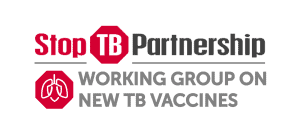Leveraging COVID-19 public-private partnerships for TB vaccine development
By: Ryan M. Kane, MD, MPH; Hunter Spencer, DO
The past few years have created a paradigm shift in the way we globally respond to and address communicable diseases. Though we remain in the midst of the COVID-19 pandemic, several novel vaccine candidates have been developed, manufactured, studied, approved, distributed, and administered to millions of individuals around the world in less than one year. This impressive feat leaves us wondering how we got here and if we can apply this momentum to other pathogens such as Mycobacterium tuberculosis, the bacterium responsible for tuberculosis (TB). We had the chance to virtually sit down with Dr. Rajeev Venkayya to explore these questions further.
Dr. Venkayya is the President of the Global Vaccine Business Unit at Takeda, a board member of both the Coalition for Epidemic Preparedness Innovations (CEPI) and IAVI, a former Special Assistant to the President of the United States of America for Biodefense (where he developed and implemented a National Strategy for Pandemic Influenza), trained in Pulmonary & Critical Care Medicine at the University of California San Francisco, and has years of additional experience in the global vaccine space (including time with the Bill & Melinda Gates Foundation).
The typical vaccine development timeline is around 10-15 years but was decreased to just under one year with the severe acute respiratory syndrome coronavirus 2 (SARS-CoV-2) vaccine. Dr. Venkayya highlighted several key factors that facilitated this abrupt change: the presence of significant background research into similar viruses (SARS and MERS), the maturity of several novel vaccine platforms (notably mRNA-based platforms), and the global humanitarian and societal crisis (and thus available funds from governments). Moreover, he noted that the maximization of public-private partnerships to mitigate development risk were essential to the rapid success of the SAVS-CoV-2 vaccines. We wanted to explore what this actually means with Dr. Venkayya given his work with entities across the spectrum from the Gates Foundation to the U.S. Government and now with CEPI and IAVI.
“There are a lot of circumstances that enabled us to do what we did with COVID vaccines with the timelines and success that we’ve seen. One of the key enablers has been the experience that we have gained over the past two decades in public-private partnerships to advance vaccine, drug, and diagnostic development… There has been a general increase in sophistication in the global health community in how you can bring donors, which are typically governments and philanthropic enterprises, together with groups that understand the science and know how to develop products, so that you can capitalize on the best that every partner brings to the table with a mission driven approach with the goal of developing a vaccine, drug, or diagnostic…The best example of that platform has been CEPI.”
– Dr. Rajeev Venkayya
Let’s start with a fairly basic definition of the public-private partnership: a public (i.e. governmental) agency working with a private (i.e. corporate or individual) entity to accomplish a shared goal. This seems fairly straightforward and not all that novel, but the difference is in the detail for their modern conception. Dr. Venkayya describes this with the metaphor of investment banking where groups such as CEPI act as “portfolio managers” to link the funds from public investments to promising emerging technologies in the private sector. To that end, these public-private portfolio managing agencies must employ talented individuals with expertise in the entire vaccine development process to most effectively manage their portfolio of vaccine candidates in order to ensure their “shareholders” (i.e. governmental agencies and thus the general population) receive a reasonable return on their investment. The partnership agencies must be able to intelligently invest in viable projects both with funds and their own experiential support to ensure the success of those projects via targeted support along the development pipeline. The unique “portfolio managers” who have contributed to the development of SARS-CoV-2 vaccines are organizations like CEPI, Operation Warp Speed (OWS), Gavi, and the Biomedical Advanced Research and Development Authority (BARDA). There are comparable groups within the domain of TB vaccine development, such as the Tuberculosis Vaccine Initiative (TBVI) and IAVI.
The success of the public-private partnerships for COVID-19 were able to address two critical challenges for vaccine developers: financial de-risking and acceleration of the approval processes (specifically the clinical and regulatory processes). “De-risking” the vaccine process as outlined by Dr. Venkayya occurs through having significant pools of funds from public and/or non-profit entities to offset a company’s investment of time, effort, capacity and know-how into candidate vaccines by helping to ensure that their candidates (validated by the funders’ own technical assessments) are likely to succeed. In essence, these external resources help offset the technical risk, market uncertainty and “opportunity cost” of tackling the pandemic threat. Another unique example of this was by facilitation (through partnerships like OWS and BARDA in the U.S.A) of governmental pre-purchasing of vaccine doses from companies before testing was complete to allow investments in capital infrastructure and raw materials (working capital) needed to manufacture large volumes of vaccines that would be ready for distribution as soon as the products completed clinical trials and were authorized. Secondly, these agencies then use their content experts in all aspects of R&D, including preclinical research, clinical development, process development and manufacturing to advise companies throughout the process. They can also facilitate interactions with regulatory authorities such as the U.S. Food and Drug Agency, and the European Medicines Agency through which unique regulatory pathways like the Emergency Use Authorization can be considered. See Figure 1 below to compare the usual vaccine development timeline as compared to the novel accelerated timeline employed for SARS-CoV-2 vaccine development.

Figure 1. Timeline of vaccine development for vaccine stages for the usual pathway as compared the accelerated pathway (used for COVID-19 vaccine development). For more information about this, please see the Johns Hopkins Research & Development website and a JAMA Internal Medicine article by Puthumana et. al regarding recent vaccine development timelines and stage descriptions.
CEPI, which emerged in 2017 (in response to the Ebola epidemic) through a global partnership between public, private, philanthropic, and civil society organizations to ensure an equitable response to future epidemics through effective vaccine deployment, is perhaps one of the best examples of a high-functioning public private partnership. Tested and proven successful during the COVID-19 pandemic through the aforementioned public-private partnership, CEPI partnered with Gavi and the World Health Organization to create the COVID-19 specific COVAX mechanism with the goals of allowing “pooled procurement” of COVID-19 vaccines, mitigating the risk of investments in individual companies by governments, and supporting more equitable access to vaccines.
CEPI’s new ambitious goal is to compress future vaccine development timelines to just 100 days. Given that the Pfizer/BioNTech vaccine took a mere 314 days, this “moonshot” might just be possible. Their comprehensive strategy will strengthen COVID-19 defenses, develop vaccines for selected known pathogens, compress development timelines, create a prototype vaccine library (accelerating future clinical trial phased development), establish a global capacity, and support LMIC health infrastructure.
“CEPI was created to fill a gap: to ensure we were better prepared for the next Ebola or these other epidemic diseases that are primarily restricted to poor countries…because there is unpredictability in the epidemiology and there is not a market, so you can pretty much guarantee you are not going to get your return on investment…CEPI came in to de-risk that.”
– Dr. Rajeev Venkayya
Leveraging public-private partnerships to advance TB vaccine R&D
Of course, there are key differences between COVID-19 and TB. TB presents a number of unique challenges such as the pathogen’s co-evolution to evade the immune system, the disease prevalence at time of vaccine development, and the comparatively longer disease latency in TB. But perhaps the greatest challenge of all for TB vaccine development is lack of sufficient funding. Annual investment in TB vaccine R&D in recent years has been estimated to be short by nearly $500 million (USD) of what was needed to accelerate TB vaccine development. Underfunding of vaccine development for pathogens that primarily affect low- and middle-income countries (LMICs), such as TB, has been a challenge for decades. However, the success brought by the expansion of public-private partnerships in the COVID era and the rapid development and dissemination of several SARS-CoV-2 vaccines has potentially created a new landscape for vaccine development and a unique opportunity to build on similar funding mechanisms in the TB space. Given that TB is one of the deadliest infectious diseases globally (claiming about 4,000 lives a day and 1.4 million lives in 2019 worldwide) with the threat of multi-drug resistant TB causing 465,000 infections in 2019, the world’s attention, finances, and partnership are required to advance these and other promising vaccine candidates through efficacy assessment, regulatory approval, mass manufacture, and dissemination. Hopefully, the lessons learned from the global imperative for collaborative investment and infrastructure development to eradicate pandemic-level diseases with SARS-CoV-2 will facilitate a well-oiled, well-funded pipeline for future vaccine development of other neglected diseases to yield equitable treatment among all global citizens.
Authors
-

Ryan is currently an Internal Medicine Chief Resident at Oregon Health & Science University (OHSU) in Portland, OR. Prior to this, he completed Internship and Residency at OHSU, graduated from the Medical University of South Carolina with an M.D. and the Harvard T.H. Chan School of Public Health with an M.P.H. in the Social and Behavioral Sciences. Ryan will be starting the National Clinician Scholars Program at Duke University as part of their 2023-2025 cohort, where he plans to utilize community engaged research methods, health system integration, and political advocacy to address inequities in socially derived metabolic diseases with a particular focus on co-occurring obesity and food insecurity. Ryan's interests include in Internal Medicine, Primary Care, Health Equity, Public Health, Weight Management, Nutrition, Narrative Medicine, and the Microbiome.
View all posts -
